The water hyacinth is considered to be the most harmful aquatic plant, it has spread from its place of origin, South America, to more than 50 countries on five continents and almost everywhere it is considered a real plague.
It is a tropical floating plant which moves with the wind on the water. Its flowers, grouped in spikes like a hyacinth, are a beautiful lavender blue with a yellow spot on one of the petals of each flower. Its dense, 30 cm long roots (and more) plunge to the bottom and offer fish an ideal place to lay their eggs. It forms a very thick layer of vegetation on the surface of the water, which spreads rapidly, obstructing the waterways and hindering or even preventing the movement of boats. Thus, in Vietnam, but also in Florida or in Kenya, several rivers and lakes are blocked by this pretty hyacinth.
However, we can manage to fight against this invasive plant by taking inspiration from what is done in different cultures. In Burma, for example, the water hyacinths are cut into strips and pulled to the shore where they are covered with silt and vegetables are planted. In Burma, they are also used to make paper and mats. Elsewhere they are used as compost or animal feed.
In Laos, we have not yet reached this point, perhaps because hyacinths are regularly harvested for consumption. There are reportedly 2 varieties of hyacinth, a large one, top pong, and a small one, phak top, which is the one we eat. The flowers are blanched and then mixed into a vegetable salad (soup phak). Note however that, taking the model from its neighbours, the Lao also begin to make paper pulp.
La jacinthe d’eau est considérée comme la plante aquatique la plus nocive qui soit, elle s’est étendue de son lieu d’origine, l’Amérique du Sud, jusque dans plus de 50 pays, sur les cinq continents et presque partout elle est considérée comme une véritable peste.
C’est une plante flottante tropicale qui se déplace au gré du vent sur les plans d’eau. Ses fleurs, regroupées en épi comme une jacinthe, sont d’un beau bleu lavande avec une tache jaune sur un des pétales de chaque fleur. Ses racines denses et longues de 30 cm (et plus) plongent vers le fond et offrent aux poissons un endroit idéal pour pondre leurs œufs. Elle forme à la surface de l’eau une couche végétale très épaisse, qui s’étend rapidement, obstrue les cours d’eau et gène ou empêche même la circulation des embarcations. Ainsi, au Vietnam, mais aussi en Floride ou au Kenya, plusieurs rivières et lacs sont obstrués par cette jolie jacinthe.
Cependant, on peut arriver à lutter contre cette envahissante en s’inspirant de ce qui se fait dans différentes cultures. En Birmanie par exemple, on découpe en lanières les tapis de jacinthes d’eau, on les tire sur le rivage où ils se couvrent de vase et on y plante des légumes. En Birmanie encore, on en fait du papier et des nattes. On s’en sert ailleurs comme composte ou comme nourriture pour les animaux.
Au Laos, on n’en est pas encore là, peut-être parce que les jacinthes sont récoltées régulièrement pour la consommation. Il y aurait 2 variétés de jacinthe, une grande, top pong, et une petite, phak top, qui est celle que l’on mange. On fait blanchir les fleurs et on les mélange ensuite dans une salade de légumes (soup phak). A noter cependant que, prenant modèle sur ses voisins, les Lao commencent aussi à en faire de la pâte à papier.
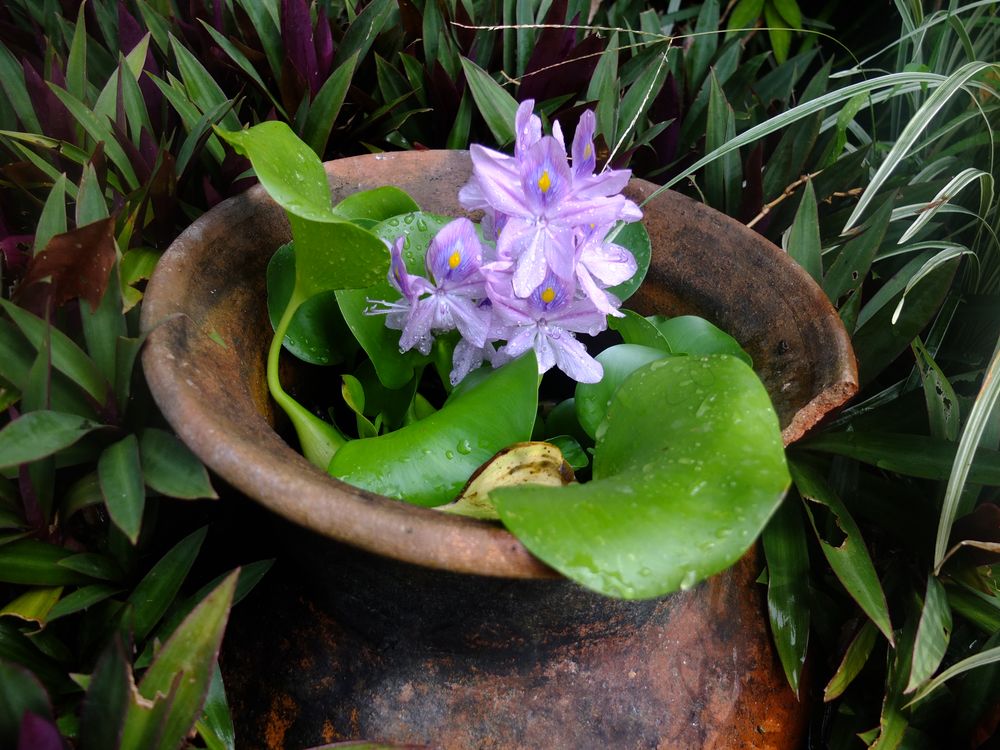
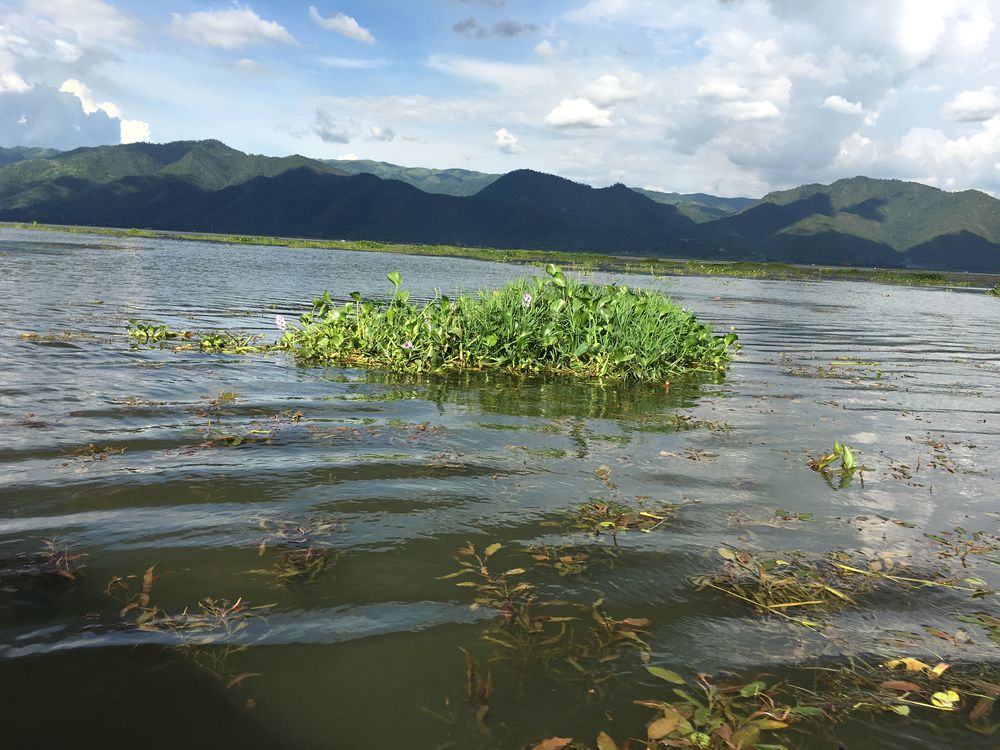
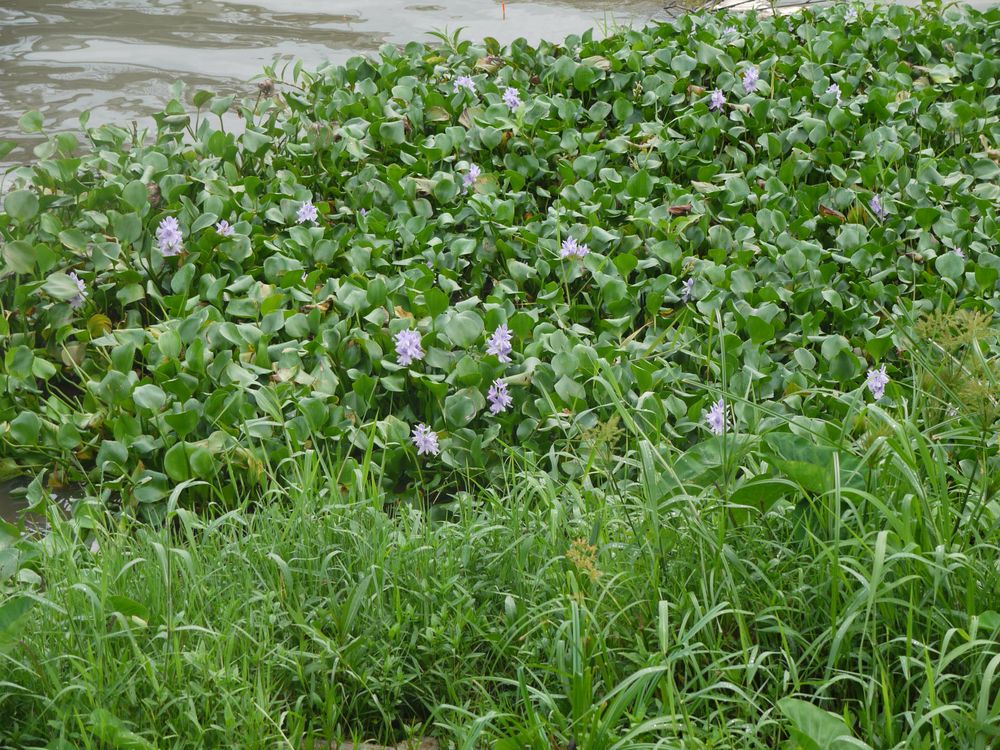
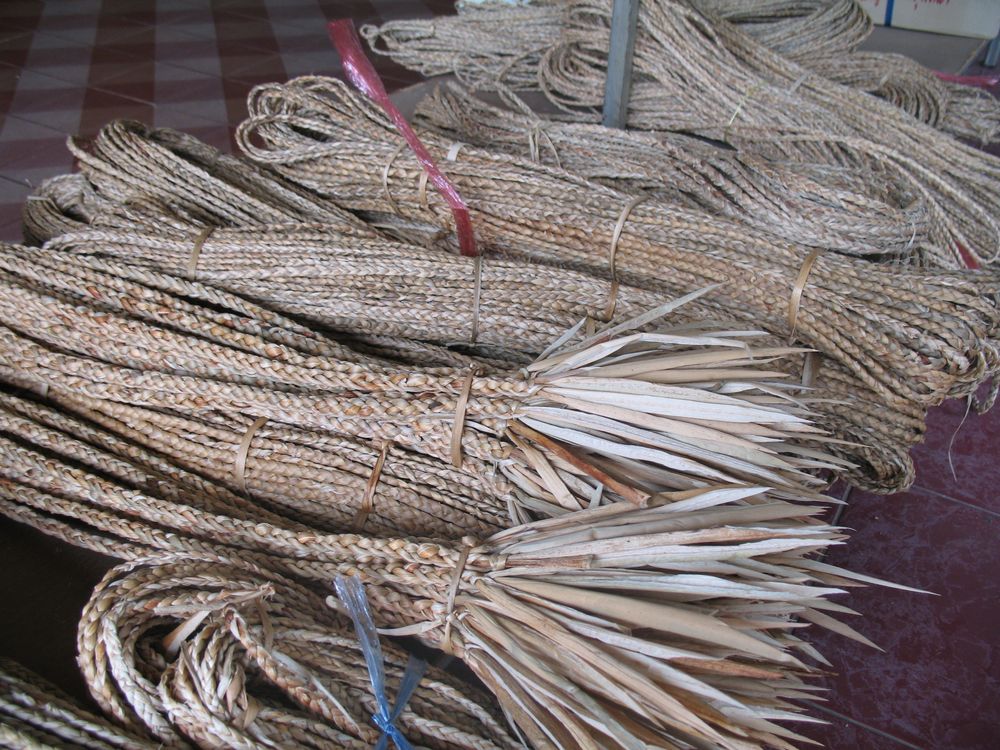
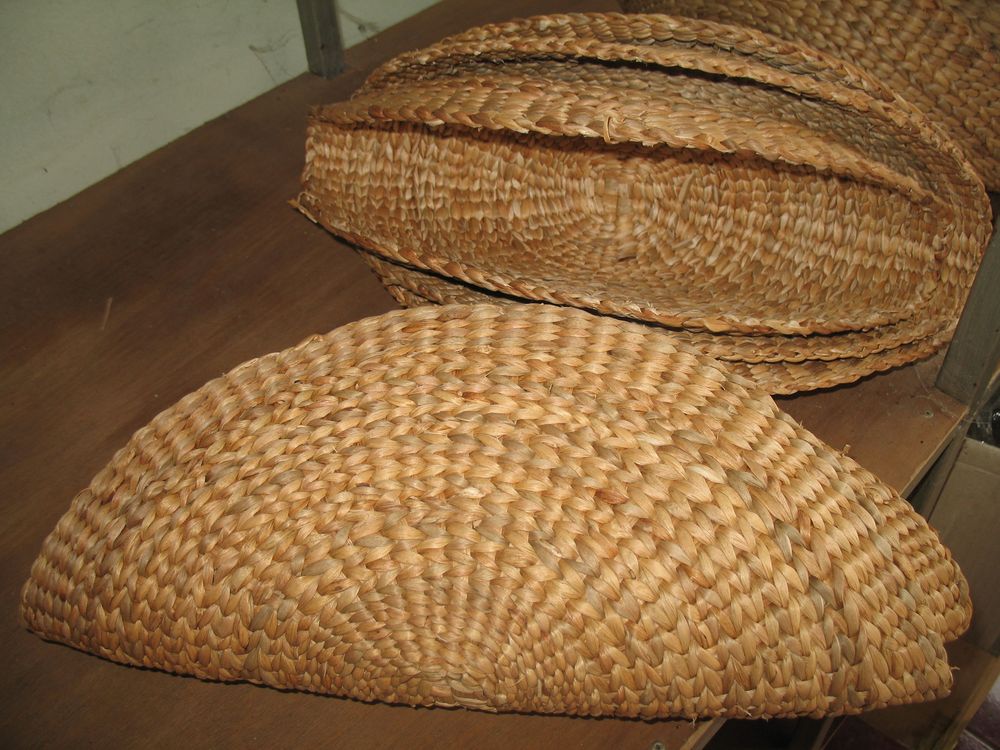
The water hyacinth is considered to be the most harmful aquatic plant, it has spread from its place of origin, South America, to more than 50 countries on five continents and almost everywhere it is considered a real plague.
It is a tropical floating plant which moves with the wind on the water. Its flowers, grouped in spikes like a hyacinth, are a beautiful lavender blue with a yellow spot on one of the petals of each flower. Its dense, 30 cm long roots (and more) plunge to the bottom and offer fish an ideal place to lay their eggs. It forms a very thick layer of vegetation on the surface of the water, which spreads rapidly, obstructing the waterways and hindering or even preventing the movement of boats. Thus, in Vietnam, but also in Florida or in Kenya, several rivers and lakes are blocked by this pretty hyacinth.
However, we can manage to fight against this invasive plant by taking inspiration from what is done in different cultures. In Burma, for example, the water hyacinths are cut into strips and pulled to the shore where they are covered with silt and vegetables are planted. In Burma, they are also used to make paper and mats. Elsewhere they are used as compost or animal feed.
In Laos, we have not yet reached this point, perhaps because hyacinths are regularly harvested for consumption. There are reportedly 2 varieties of hyacinth, a large one, top pong, and a small one, phak top, which is the one we eat. The flowers are blanched and then mixed into a vegetable salad (soup phak). Note however that, taking the model from its neighbours, the Lao also begin to make paper pulp.
La jacinthe d’eau est considérée comme la plante aquatique la plus nocive qui soit, elle s’est étendue de son lieu d’origine, l’Amérique du Sud, jusque dans plus de 50 pays, sur les cinq continents et presque partout elle est considérée comme une véritable peste.
C’est une plante flottante tropicale qui se déplace au gré du vent sur les plans d’eau. Ses fleurs, regroupées en épi comme une jacinthe, sont d’un beau bleu lavande avec une tache jaune sur un des pétales de chaque fleur. Ses racines denses et longues de 30 cm (et plus) plongent vers le fond et offrent aux poissons un endroit idéal pour pondre leurs œufs. Elle forme à la surface de l’eau une couche végétale très épaisse, qui s’étend rapidement, obstrue les cours d’eau et gène ou empêche même la circulation des embarcations. Ainsi, au Vietnam, mais aussi en Floride ou au Kenya, plusieurs rivières et lacs sont obstrués par cette jolie jacinthe.
Cependant, on peut arriver à lutter contre cette envahissante en s’inspirant de ce qui se fait dans différentes cultures. En Birmanie par exemple, on découpe en lanières les tapis de jacinthes d’eau, on les tire sur le rivage où ils se couvrent de vase et on y plante des légumes. En Birmanie encore, on en fait du papier et des nattes. On s’en sert ailleurs comme composte ou comme nourriture pour les animaux.
Au Laos, on n’en est pas encore là, peut-être parce que les jacinthes sont récoltées régulièrement pour la consommation. Il y aurait 2 variétés de jacinthe, une grande, top pong, et une petite, phak top, qui est celle que l’on mange. On fait blanchir les fleurs et on les mélange ensuite dans une salade de légumes (soup phak). A noter cependant que, prenant modèle sur ses voisins, les Lao commencent aussi à en faire de la pâte à papier.










The water hyacinth is considered to be the most harmful aquatic plant, it has spread from its place of origin, South America, to more than 50 countries on five continents and almost everywhere it is considered a real plague.
It is a tropical floating plant which moves with the wind on the water. Its flowers, grouped in spikes like a hyacinth, are a beautiful lavender blue with a yellow spot on one of the petals of each flower. Its dense, 30 cm long roots (and more) plunge to the bottom and offer fish an ideal place to lay their eggs. It forms a very thick layer of vegetation on the surface of the water, which spreads rapidly, obstructing the waterways and hindering or even preventing the movement of boats. Thus, in Vietnam, but also in Florida or in Kenya, several rivers and lakes are blocked by this pretty hyacinth.
However, we can manage to fight against this invasive plant by taking inspiration from what is done in different cultures. In Burma, for example, the water hyacinths are cut into strips and pulled to the shore where they are covered with silt and vegetables are planted. In Burma, they are also used to make paper and mats. Elsewhere they are used as compost or animal feed.
In Laos, we have not yet reached this point, perhaps because hyacinths are regularly harvested for consumption. There are reportedly 2 varieties of hyacinth, a large one, top pong, and a small one, phak top, which is the one we eat. The flowers are blanched and then mixed into a vegetable salad (soup phak). Note however that, taking the model from its neighbours, the Lao also begin to make paper pulp.
La jacinthe d’eau est considérée comme la plante aquatique la plus nocive qui soit, elle s’est étendue de son lieu d’origine, l’Amérique du Sud, jusque dans plus de 50 pays, sur les cinq continents et presque partout elle est considérée comme une véritable peste.
C’est une plante flottante tropicale qui se déplace au gré du vent sur les plans d’eau. Ses fleurs, regroupées en épi comme une jacinthe, sont d’un beau bleu lavande avec une tache jaune sur un des pétales de chaque fleur. Ses racines denses et longues de 30 cm (et plus) plongent vers le fond et offrent aux poissons un endroit idéal pour pondre leurs œufs. Elle forme à la surface de l’eau une couche végétale très épaisse, qui s’étend rapidement, obstrue les cours d’eau et gène ou empêche même la circulation des embarcations. Ainsi, au Vietnam, mais aussi en Floride ou au Kenya, plusieurs rivières et lacs sont obstrués par cette jolie jacinthe.
Cependant, on peut arriver à lutter contre cette envahissante en s’inspirant de ce qui se fait dans différentes cultures. En Birmanie par exemple, on découpe en lanières les tapis de jacinthes d’eau, on les tire sur le rivage où ils se couvrent de vase et on y plante des légumes. En Birmanie encore, on en fait du papier et des nattes. On s’en sert ailleurs comme composte ou comme nourriture pour les animaux.
Au Laos, on n’en est pas encore là, peut-être parce que les jacinthes sont récoltées régulièrement pour la consommation. Il y aurait 2 variétés de jacinthe, une grande, top pong, et une petite, phak top, qui est celle que l’on mange. On fait blanchir les fleurs et on les mélange ensuite dans une salade de légumes (soup phak). A noter cependant que, prenant modèle sur ses voisins, les Lao commencent aussi à en faire de la pâte à papier.


